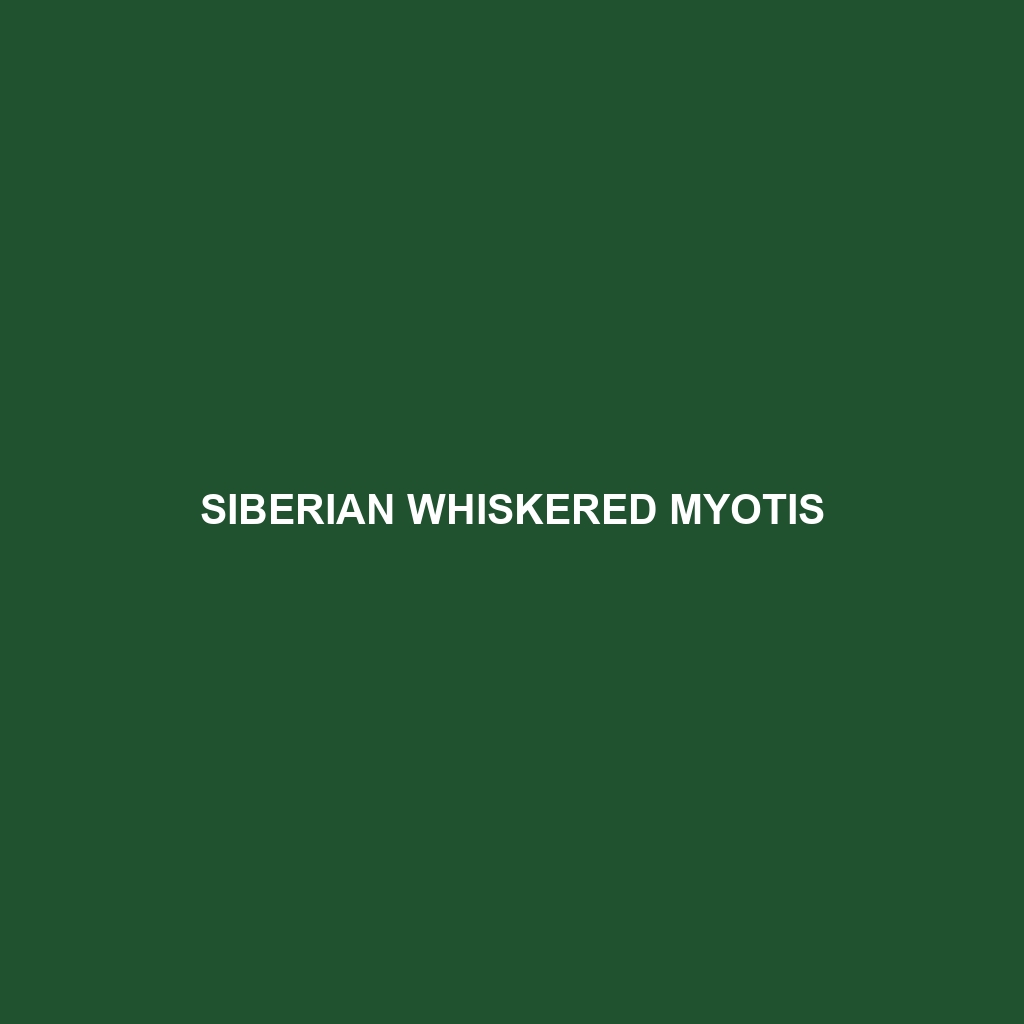Siberian Whiskered Myotis
Common Name: Siberian Whiskered Myotis
Scientific Name: Myotis mystacinus
Habitat
The Siberian Whiskered Myotis primarily inhabits the boreal forests and woodlands of northeastern Asia, specifically in regions of Russia, Mongolia, and parts of China. This bat species favors environments that include dense foliage and nearby water sources, such as rivers and lakes, which are crucial for sustaining its prey.
Physical Characteristics
This species of bat exhibits unique physical traits, including a wingspan of approximately 24-27 cm and a body length of 4-6 cm. Its fur is typically dark brown or gray, presenting a slight sheen, while its facial structure is characterized by elongated whiskers and large ears, which help in echolocation. The Siberian Whiskered Myotis is known for its petite size relative to other bat species, making it a distinctive presence in its native habitat.
Behavior
The Siberian Whiskered Myotis is primarily nocturnal, emerging at dusk to hunt for insects. It is known for its agile flying abilities, which allow it to easily navigate through dense forests. Socially, these bats may roost in small colonies in tree hollows or under loose bark, and they often exhibit interesting group dynamics during foraging and roosting.
Diet
Primarily insectivorous, the Siberian Whiskered Myotis feeds on a variety of flying insects, including moths, mosquitoes, and beetles. Its hunting behavior is enhanced by echolocation, allowing it to detect prey even in complete darkness. The consumption of insects plays a crucial role in controlling pest populations, contributing to the health of its ecosystem.
Reproduction
This bat typically breeds once a year, with mating occurring in late summer. After a gestation period of around 50-60 days, females give birth to a single pup, which they nurture until it becomes capable of flight. Mothers display strong maternal instincts, often forming small groups with other mothers for protection and support during the rearing of their young.
Conservation Status
The Siberian Whiskered Myotis is currently listed as ‘Least Concern’ by the IUCN Red List; however, environmental changes and habitat destruction pose potential threats to its populations. Conservation efforts are important to maintain healthy ecosystems that support this species.
Interesting Facts
One fascinating aspect of the Siberian Whiskered Myotis is its ability to enter a state of torpor, allowing it to conserve energy during extreme weather conditions. Additionally, these bats are known for their long life spans relative to other bats, with some individuals living up to 10 years or more in the wild.
Role in Ecosystem
The Siberian Whiskered Myotis plays a vital role in its ecosystem as a pollinator and pest controller. By preying on insects, it helps to regulate populations that could otherwise become harmful to vegetation and agriculture. Furthermore, the presence of bats like the Siberian Whiskered Myotis is indicative of a balanced ecosystem, highlighting their importance to biodiversity.
